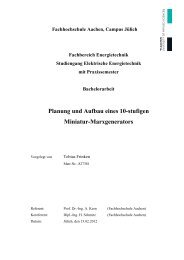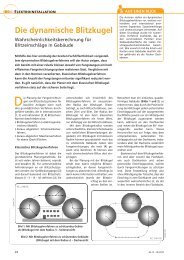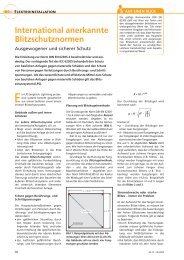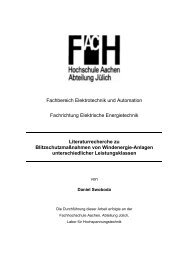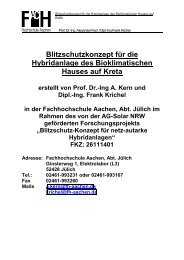Simulation of electric and magnetic fields using FEMM - FH Aachen ...
Simulation of electric and magnetic fields using FEMM - FH Aachen ...
Simulation of electric and magnetic fields using FEMM - FH Aachen ...
You also want an ePaper? Increase the reach of your titles
YUMPU automatically turns print PDFs into web optimized ePapers that Google loves.
Figure 3-2 Problem definition<br />
3.1.3 Draw boundary<br />
Draw a boundary to be the solution region that we are interested in. The shape <strong>and</strong> area <strong>of</strong><br />
this region can be selected as you want. Here, we draw it as a square, so that we can have an<br />
axisymmetric solution. Point nodes at (-5, -5), (-5, 11), (11, -5), (11, 11), then connect them<br />
to make a square boundary.<br />
3.1.4 Create a new coil<br />
Draw 2 squares in the center <strong>of</strong> boundary to make the core. Point nodes at (0, 0), (0, 6), (6, 0),<br />
(6, 6). Connect the nodes to make the first square. Point nodes at (1, 1), (1, 5), (5, 1), (5, 5),<br />
connect them to make the second.<br />
Figure 3-3 Core<br />
Point nodes at (-0.25, 4.5), (-0.25, 1.5), (0, 4.5), (0, 1.5), (1, 4.5), (1, 1.5), (1.25, 4.5), (1.25,<br />
1.5). Then connect them as shown to make the coil.<br />
.<br />
Figure 3-4 Coil




